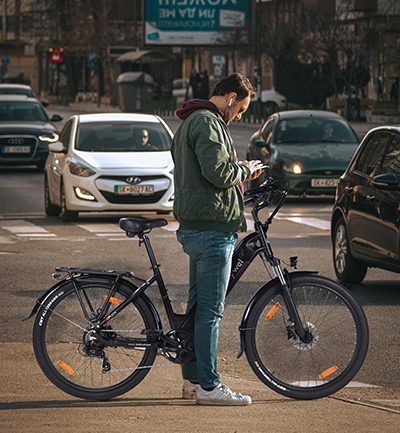Class 3 e-bikes have the following advantages over Class 1 and 2 e-bikes:
Faster speed: Class 1 and 2 rowery elektryczne generally have a speed limit of 20mph (approx. 32km/h), while Class 3 e-bikes can reach a maximum speed of 28mph (approx. 45km/h), which is able to meet the needs of long-distance commuting and getting to the destination quickly.
More power: They are usually equipped with more powerful motors, such as 750w motors, and have higher torque output, which makes them more capable of climbing hills and carrying heavy loads, and more relaxed when facing steep hills or carrying heavier items.
Relatively good range: Although the power consumption is high due to the high speed and power, some Class 3 e-bikes are equipped with high-capacity batteries or dual-battery systems, which provide a guaranteed range. For example, the Maverick bqi-c3pro has dual 920wh removable batteries, which can provide a maximum range of 100km per charge.
Higher safety: generally equipped with a speedometer and other devices, so that riders can better control the speed, to enhance the safety and controllability of riding. Suitable for experienced riders who can safely manage higher speeds, and can fully utilise the speed advantage on roads with low traffic and good road conditions.
It is suitable for experienced riders who can safely manage higher speeds, and can fully utilise the speed advantage on roads with low traffic and good conditions.
Good user experience: Some of them adopt advanced components and design, such as carbon Gates belt drive, which is durable and can also reduce the maintenance cost and improve the overall user experience.
How to determine the speed class of e-bike?
Different regions have different regulations and categorisation standards for e-bike speed classes. For example, some European countries allow the use of higher-power and faster e-bikes, while some regions have strict restrictions.
Check Product Parameters
Motor power: Generally speaking, the higher the motor power, the higher the speed class. For example, according to EU regulations, Class 3 e-bikes are usually equipped with 750w motors, and the upper speed limit is about 45km/h; while Class 1 and 2 e-bikes have relatively low motor power, and the upper speed limit is 25km/h.
Designed speed: The maximum designed speed will be indicated on the product specification or vehicle certificate, which directly indicates its speed level. The new national standard stipulates that the maximum designed speed of e-bikes should not exceed 25km/h.
Understanding the vehicle type
Class 1 e-bike: with pedal assist function, the motor only activates when pedalling. The speed is generally limited to 20mph (about 32km/h), but according to the EU standard it is 25km/h.
Class 2 e-bikes: have pedal assist and a powerful throttle function, the drive system can be activated by pushing a button or twisting a handle bar, the speed limit is also 20mph (approx. 32km/h), but 25km/h by EU standards.
Class 3 e-bikes: usually pedal-assist only, with more powerful motors and speeds of up to 28mph (around 45km/h), and restricted to people aged 17 and over, with specific requirements such as a motorbike licence in some areas.
If you’re looking for the best electric bike, visit the Bodywel website. Here you will find a range of quality electric bikes to suit your needs and desires.


